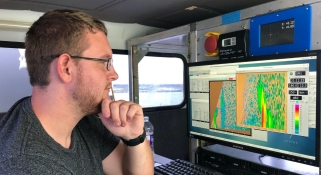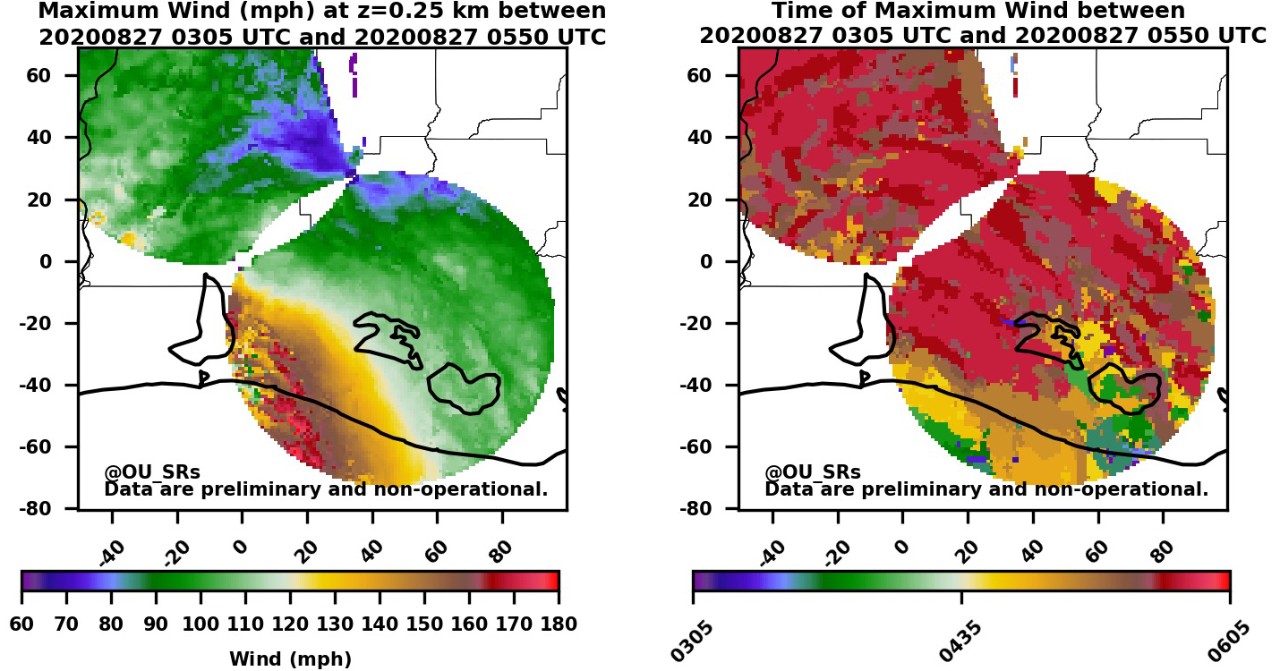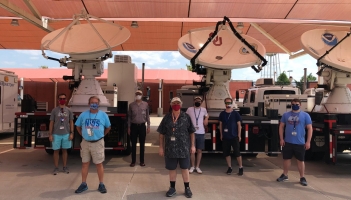NORMAN, OKLA. – A team of research scientists from the University of Oklahoma and the National Oceanic and Atmospheric Administration National Severe Storms Laboratory have traveled to Texas near the Gulf of Mexico to collect data during the landfall of Hurricane Laura.
The data collected will allow for a better understanding of hurricane winds and the damage they cause. This knowledge will aid in the development of cost-effective building codes to lessen future damage, provide more data to improve other infrastructure, and increase storm resilience.
“We want to help mitigate property damage by working with engineers and using our data to improve the building and construction codes needed to develop a more resilient national infrastructure in the future,” said Michael Biggerstaff, OU School of Meteorology professor.
The team, led by Biggerstaff and Sean Waugh from the NOAA NSSL, is working closely with colleagues from Texas Tech University, the University of Florida, the Center for Severe Weather Research, and the University of Alabama-Huntsville.
Data collected by the team will be shared in real-time with NOAA National Weather Service Forecast Offices and emergency managers in areas affected by the storm. A preliminary map of maximum winds show wind speeds reached up to 180 miles per hour just 250 meters above the ground occurred to the south and southeast of Lake Charles, LA.




